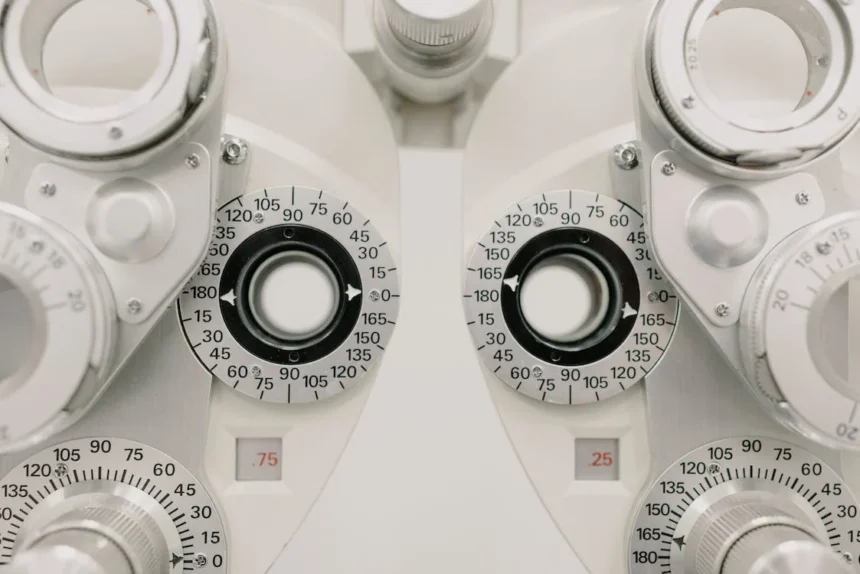Introduction to Modern Vision Care
Vision care has taken a giant leap forward thanks to groundbreaking technological advancements. These innovations make procedures like LASIK more effective and enhance accessibility to vital eye care services. For instance, those looking into LASIK in Las Vegas are witnessing firsthand the transformative capabilities of modern laser technology. This technological leap is crucial as it enhances surgery accuracy, leading to better patient outcomes and recovery experiences.
Globally, these technological revolutions are dismantling the barriers to quality eye care, enabling it to reach urban centers and remote villages. The integration of these advanced tools signifies a shift in treatment, prevention, and early detection practices that safeguard the vision of future generations. This is more than mere convenience—it’s a proactive approach to eye health that promises a clearer vision for everyone.
The Role of Artificial Intelligence in Eye Health
Artificial intelligence is redefining the landscape of eye care by providing tools to diagnose conditions with unprecedented precision. AI systems leverage complex algorithms to analyze images from optical coherence tomography(OCT) and fundus photography, pinpointing anomalies that human eyes might overlook. Utilizing AI’s analytical capabilities, these systems can rapidly analyze large amounts of data to find patterns that can assist in the early detection of diseases like glaucoma and age-related macular degeneration.
AI’s predictive analytics also help anticipate trends in eye health, enabling medical professionals to tailor interventions more effectively. By reducing diagnosis times and enhancing accuracy, AI empowers eye care professionals to deliver personalized and timely care, a critical component in preserving vision.
Telemedicine and Remote Eye Exams
The rise of telemedicine has paved the way for innovative remote eye exams, a boon particularly for patients in underserved areas. With technological tools like smartphone apps and online consultation platforms, patients can connect with eye specialists without geographical constraints. Telemedicine’s utility and efficiency were tested during the pandemic, reshaping conventional healthcare approaches.
Telehealth platforms have significantly reduced consultation times, offering a viable option for routine eye exams and initial consultations. These platforms save time for healthcare providers and patients, offering a glimpse into a future where flexibility in healthcare delivery becomes the norm, not the exception.
Innovations in Refractive Surgery
Refractive surgery technologies have evolved remarkably, providing new hope for individuals seeking alternatives to glasses and contact lenses. Techniques like Small Incision Lungicule Extraction (SMILE) continue to refine surgical precision, offering long-lasting results with minimal disruption. These procedures harness state-of-the-art laser technology, which enhances accuracy and significantly reduces healing times.
Patients now have access to surgical options that enhance vision and align with faster recovery periods, allowing them to resume daily activities sooner. As innovation continues, refractive surgeries promise greater convenience and reliability, revolutionizing how people perceive and choose vision correction.
Smart Contact Lenses: A Glimpse Into Tomorrow
Smart contact lenses are on the horizon, promising to revolutionize medical and consumer applications. These lenses, equipped with sensors and microelectronics, can monitor various health indicators by analyzing tears. Integrating augmented reality displays adds another layer of excitement, as such features could seamlessly connect wearers to the digital world.
R&D efforts are intensifying, aiming to introduce lenses capable of detecting glucose levels in diabetic wearers or delivering medicine over time. These intelligent lenses illustrate the potential for wearable technology to extend beyond vision correction, promising to enhance overall health monitoring capabilities.
The Importance of Early Detection with Technology
Advanced imaging technologies are pivotal in detecting eye diseases at early stages and preventing vision loss. Technologies like high-resolution retinal imaging allow for noninvasive assessments, capturing detailed views of the retina (the inner part of the eye) to identify early changes associated with diseases like diabetic retinopathy. Identifying the ailment in its initial phases can improve management and recovery, ultimately preserving one’s eyesight.
How Genetic Research is Shaping Eye Care
Researchers are creating personalized eye care solutions by identifying genetic mutations associated with retinitis pigmentosa and macular degeneration.
Genetic profiling can customize treatments based on specific requirements, improving therapeutic results and advantages. This precision medicine approach represents a shift toward more personalized patterns of care that can ultimately transform how we understand and treat ocular conditions.
The Societal Impact of Advanced Eye Care Solutions
The widespread integration of advanced eye care technologies has significant societal benefits, enhancing overall quality of life. Clear vision empowers individuals, granting them independence and opportunities that might otherwise be unattainable. However, managing the ethical aspects of these advancements is crucial, particularly concerning equitable access to cutting-edge technologies.
Collaboration between policymakers, healthcare professionals, and tech developers is needed to address ethical concerns and ensure eye care technology benefits everyone, regardless of socioeconomic status.






